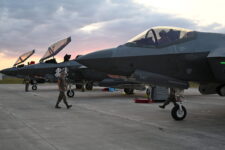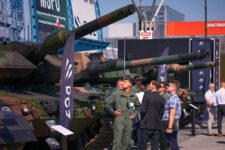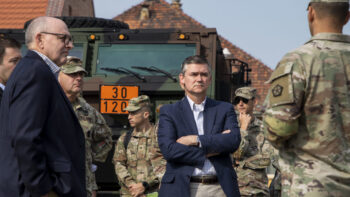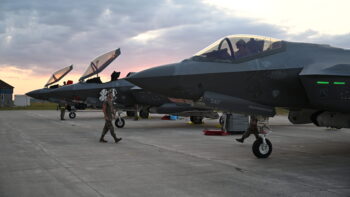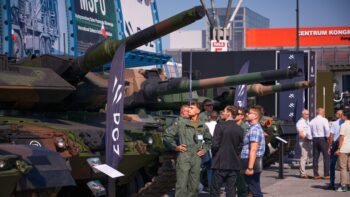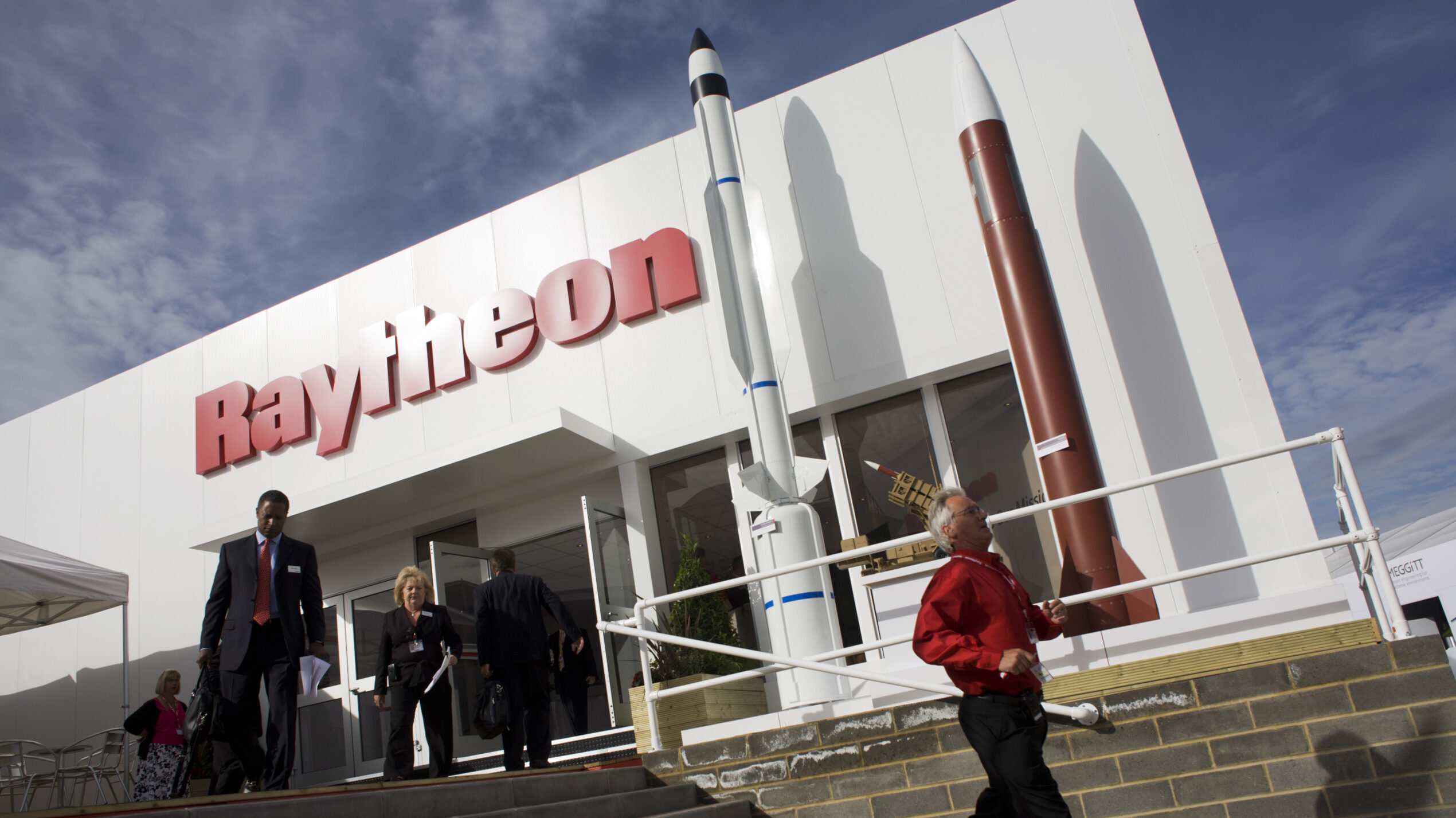
US Aerospace manufacturer Raytheon’s hospitality chalet at the Farnborough Airshow. (Photo by In Pictures Ltd./Corbis via Getty Images)
WASHINGTON — Last month, Raytheon Technologies rebranded itself as RTX, creating three sub units: Pratt & Whitney, Collins Aerospace and Raytheon. The latter will encompass the majority of the company’s defense portfolio, with longtime Raytheon executive Wes Kremer as its head.
“This is really about aligning the businesses within Raytheon. We’re creating three pretty equal businesses of around $25 billion each,” Kremer told Breaking Defense during last month’s Paris Air Show. “Raytheon is defense only. There are parts of defense in the other businesses, but it really streamlined our alignment of inter-company work.”
In the following Q&A, Kremer touches on how the company plans to increase sales in Europe, the health of its supply chain, and why multi-year deals may not be the cure-all they may seem on paper. This interview was lightly edited for length and clarity.
BREAKING DEFENSE: We hear a lot, both in the US and Europe, from leaders saying, ‘Well, we’re pushing industry to do more and go faster,’ particularly on munitions. From your perspective, what are those conversations? What’s the message you’re getting from these governments? And what’s the message that you’re saying, in turn, ‘Here’s what we need from you guys’?
KREMER: Well, the number one thing that these countries can do is put us on contract. And we spend a lot of time talking about all of these issues, whether it’s co-production in Europe, or whether it’s shortages in the supply base, or whether it’s capacity within our factories, but at the end of the day, it doesn’t really make sense for us to go invest or solve those problems until we have a contract. And so one of the things that I emphasized when I met with the NATO national armaments directors is that, remember, all of these things start with a contract. We’re a big company. We have the ability to go solve these problems — but you know, I don’t build stuff in advance. I don’t have bunches of things sitting on shelves waiting for customers. That is the reality that Ukraine has exposed, is that in most cases, there’s a two-to-three-year lead time from contract. And here we are now, 15 months into this conflict, and you can look up how many billions have been [announced by NATO nations], and we’ve been awarded $2 billion in contracts so far for munitions replacement.
So is that the message back effectively ‘Look, you guys are talking about spending the money, but we need you to show it to us so we can get going?’
Yeah. Yeah. Yeah, and I mean, it also shows the time it takes to do contracting, right? I don’t want to say that they’re not trying. Each of these things — first identifying a need, and then getting their equivalent of governments or congressional support, and then getting the funding, and then issuing an RFP, and then us getting all the quotes from our suppliers, and then responding back to that, and then going back and actually doing the contract — it’s a slow process. And then, when you think about that, if that takes a year, and then we’re still three years away from delivery … We have to try to work on accelerating our build timelines. But I think they have to also take on the challenge of how do you get the industry under contracts quicker.
So what do they say when you say that?
Not a lot.
But it’s not push back, they’re not saying you guys aren’t doing your job.
No, no. I mean, they would love us to invest and start building in advance. And in some situations, we do that. But we have to look at the business case of whether that makes sense, for us to tie up money without a contract.
Since you mentioned getting on contract: The Pentagon in its last budget request is looking at initially five, now seven, multi-year buys for munitions. Congress hasn’t made those official yet, but if they happen, how does that help you?
You know, probably the biggest lever that the government can help out with is the multi-year procurements. Now, multi-year procurements are not a big deal to [my organization]. I mean, we’re a big company. We have the ability to fund in advance, to do things like that. But where it really makes a difference is, you get down to that fourth-tier supplier, that’s a mom-and-pop shop. What a multi-year contract does is it gives them surety. And when they understand that they’re going to be building X number for five years, then they can make that business decision, ‘Hey, do I hire more people? Do I invest in more capital or automation?’ It allows them to have certainty around making those kinds of decisions.
And, you know, if you go back to some of the Pentagon language out of OSD [Office of the Secretary of Defense], it’s really about stabilizing and keeping the supply base, especially for munitions, warm. As a country, we typically do a fairly good job of buying airplanes and ships, but munitions is always the kind of buy-to-budget. So you see quantities of munitions, even important munitions, that fluctuate greatly from year to year and budget cycle to budget cycle. And it’s that uncertainty that really, now when you have a situation like Ukraine, you’re not [set up] to handle that surge in orders.
Given that, are multi-year something you need more of?
You know, it’s one tool in the toolkit. The other thing to remember about a multi-year is, it’s actually a pretty complex transaction. By law, there are certain thresholds that have to be met on cost and things like that. The other nuanced aspect of a multi-year is that in order to do it right, you have to authorize a year in advance, advanced procurement funds, because you have to somehow go out and start placing those orders in the supply base and start buying long-lead materials. And then each year, you have to have enough funding allocated to cover the termination liability of the stuff that people are building in advance.
So many times, if it isn’t funded properly in each of the right years, it still can break down. So it’s a pretty complex process. And that’s why it typically takes a couple of years to get through all the hurdles to get it laid out in place right. And so, you know, I am a little concerned that in trying to go fast here, that one of those steps, or some of the mechanics of that, might not fall into place to really optimize the advantages of a multi-year.
So are you saying you’re concerned that when they came up with this idea and tried to move quickly, the Pentagon maybe didn’t get all the hurdles thought out?
So you know, just to break it down a little more specifically — say you’re going to buy 1,000 AMRAAM missiles for the next five years. In that first year, you can’t just have the funding for 1,000 missiles. You actually now have to give advanced procurement for years two, three, and four, such that I can now put those suppliers on contract. … That’s called the advanced procurement part of it. And, you know, many times those sorts of things sometimes get lost in the details, and we don’t get the funding profiles or the appropriations in the right years to go execute a multi-year.
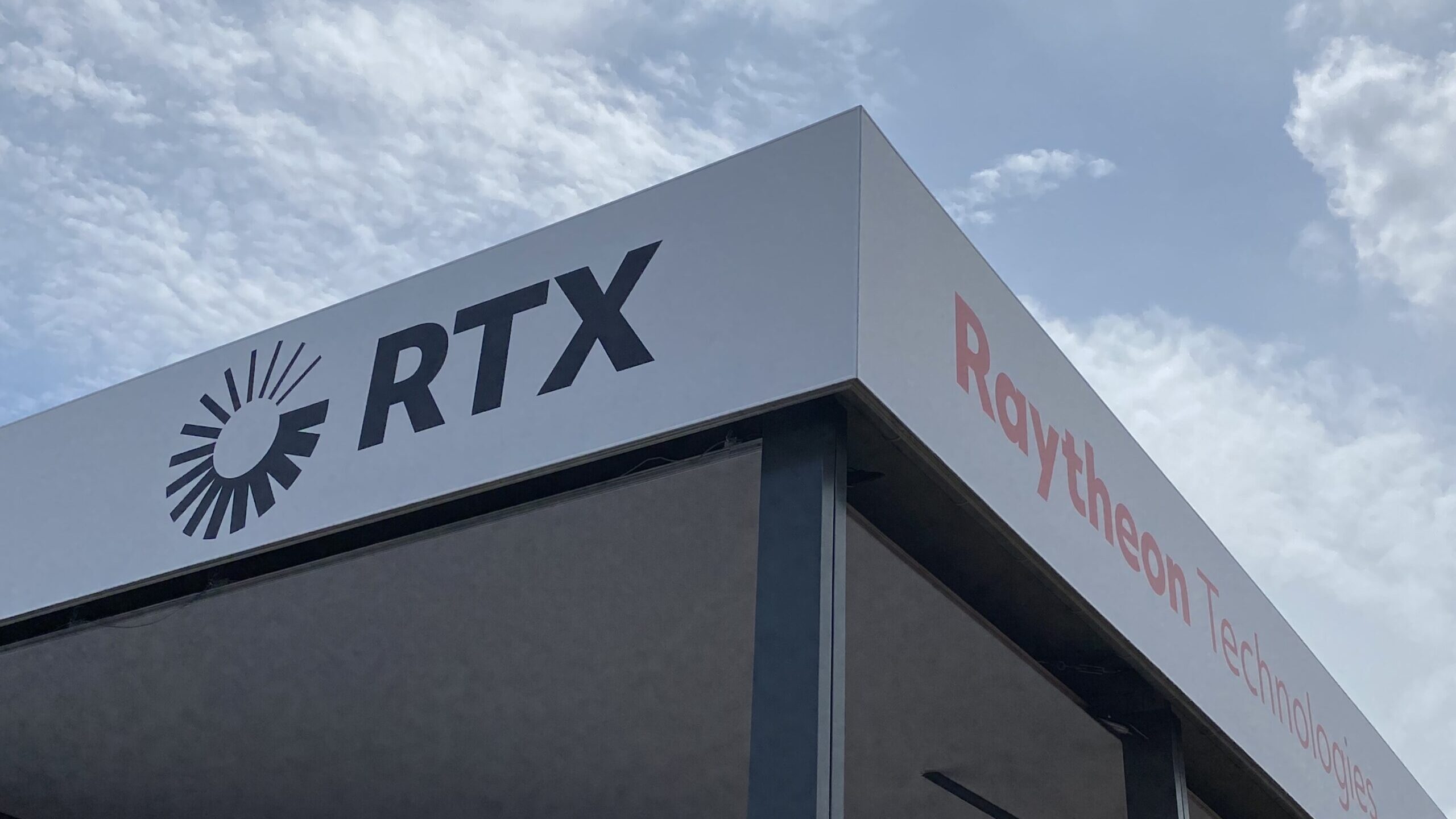
The RTX chalet at the 2023 Paris Air Show shows off both the rebranded company name and its older Raytheon Technologies title. (Aaron Mehta/Breaking Defense)
This is interesting, because I think people would expect industry to just be completely thrilled about the way things shook out with that. But you’re sounding fairly cautious here.
The other thing with a multi-year is, I’m in an inflationary environment, I’m signing up to five years of pricing for four years. That’s an issue, right? You can potentially negotiate an escalation clause, but those are really hard to negotiate, because the two perspectives on that are very different. The government doesn’t want to give you a carte blanche escape path, for what may be perceived as performance issues, as opposed to actual price escalation issues.
The other challenge that we’re facing with multi-years is that, you know, the stated OSD directive is to basically create stabilization in the industrial base. But the law says you have to basically show a 10 percent cost reduction. So go back to the AMRAAM example, I mean, the AMRAAMs that I’m delivering today that we have an actual pricing on, were contracted in 2019. So if your baseline price is 2019, and we’ve had all of this inflation, now try to say that pricing starting in 2025, delivering out to 2030 is going to be 10 percent lower than that base cost. So now you get into this issue of what is your real base cost and how do you show that cost savings. You have a part of the system that’s focused on the cost savings, and a part of the system focused on stabilizing the industrial base. And those two can be at odds.
Europeans like to buy European when they can, but right now countries are looking for any weapons they can get their hands on. What’s your sense of where the balance for nations are right now between wanting to buy European vs. American?
There’s been a lot of talk about interoperability within NATO, so how do we get systems that can talk to each other? [But there’s a growing sense that] what we really want to get to is interchangeability. You want to get to where if I hand over Patriot missiles, they work, or if a US F-35 lands someplace at a NATO base that they get resupplied with the same dash number, the same version of missiles or weapons. And that’s interchangeability. So how do we get to that? Clearly, historically, the Europeans have wanted to develop their own systems. But that happens all over the world, countries want to have a sovereign capability for their defense. What I think Ukraine is highlighting is this opportunity for the United States and NATO to work closer together to get to this interchangeability of where it actually is the same systems.
What I think the role that industry has to play is now, companies like Raytheon, we have to be willing to then co-produce in Europe. We can’t expect that the European defense industry is not going to play in this. We have to think about, how do we shift the roles to create the win-win partnerships such that the sovereign capabilities of these countries can be maintained while getting to this interchangeability concept within NATO and the US.
Is there an understanding within top level leadership of RTX, especially among the board, that it might be better to get only, say, 60 cents on the dollar and do co-production if it lets you break more into these markets?
You know, we’ve been dealing with this for several years now. In the Middle East, they call it localization, where a certain amount of the content [has to be done in country.] So this, to me is a different version of localization. There’s not an issue from a Raytheon leadership or corporate leadership position on doing this. I think it’s a fairly new concept, and it’s [about] getting everybody aligned. And so, you know, that’s one of the things that we’re talking to our European partners about during this show.

